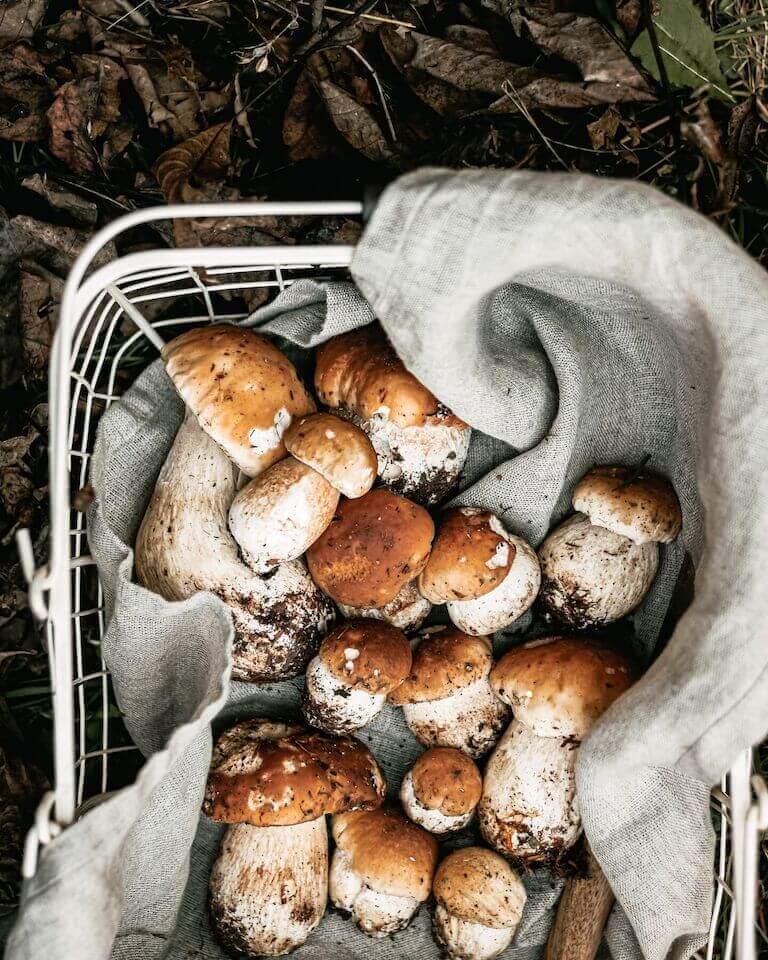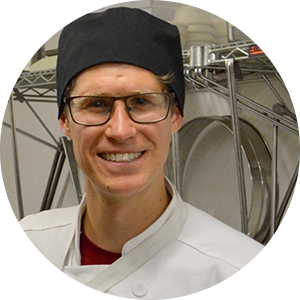Listen to This Article:
Even if you’ve never heard of functional mushrooms, you may have seen them as an ingredient in a food product. Just take a stroll down the aisle of a health food store, and you’ll find these special fungi in all sorts of things – from coffee to protein powder to hot chocolate mix. And since this market is expected to more than double in the next ten years, you’ll likely start seeing them even more frequently.
These mushrooms aren’t the same fungi used as hallucinogens. Instead, they’re a distinct group of edible fungi known for their unique health benefits and versatile in their potential uses.
Whether you’re hoping to incorporate health trends into your own cafe or are trying to learn more about holistic health, understanding how to use these fungi may help you further your personal or professional goals.
What Are Functional Mushrooms?
Functional mushrooms are types of fungi that are heralded for health benefits beyond their nutritional compositions. The exact benefits depend on the species of mushroom used. However, functional mushrooms are often categorized into two main groups: medicinal mushrooms and adaptogenic mushrooms.
Medicinal mushrooms contain compounds that provide specific health benefits. Many of these mushrooms offer antioxidative and cytotoxic properties1, meaning they may be able to inhibit the damaging process of oxidation as well as kill harmful cells. While these mushrooms may provide medicinal benefits, it’s important to recognize that they’re considered dietary supplements. That means they’re regulated by the Food and Drug Administration as food, not drugs.
Adaptogenic mushrooms contain adaptogens – compounds that help bodies adapt to and fight off chemical, biological, and physical stress. Rather than relieve a cough or get rid of the inflammation that’s causing a headache, adaptogens help our bodies’ stress response systems function as they should.
Before you add any type of functional mushroom to your diet or serve this ingredient to others, be aware improper use can lead to adverse side effects like nausea and insomnia. As with all supplements, you should discuss the products with a medical professional before using.

Types of Functional Mushrooms to Know
If you’re interested in using functional mushrooms in the kitchen, start by becoming familiar with the different types. After learning a bit about each, you may find you’re interested in exploring how these mushrooms fit into the larger picture of holistic nutrition and wellness.
Reishi
Also known as the mushroom of immortality, the reishi mushroom is touted for its ability to supercharge the immune system and increase stamina. Since these mushrooms grow on trees across the world, you may be able to get your hands on them by connecting with a local forager or heading into the forest yourself. Keep in mind that it takes a lot of training to correctly identify edible mushrooms, so it would be best to stick to purchasing from reputable suppliers instead.
Chaga
If you’re looking for a mushroom filled with antioxidants2, look no further than the chaga. With an earthy and bitter flavor that is a bit reminiscent of the birch trees they grow on, chaga mushrooms can blend well in coffee or tea.
Cordyceps
You won’t find these mushrooms growing on downed logs, but you might spot them growing on the caterpillars they parasitize. Yes, you read that right, these mushrooms grow on caterpillars. While cordyceps may sound like something out of a horror film, these mushrooms may help increase fitness levels3 and decrease physical fatigue4.
Lion’s Mane
Known in the culinary world for its seafood-like aroma and flavor, the lion’s mane mushroom may also help improve cognitive function5.
Shiitake
Native to East Asia, shiitake mushrooms are prized for their meaty, umami flavor. Not only are they delicious, but shiitakes may help improve immunity6 and improve the treatment of gastric cancer7.
Turkey Tail
If you’ve walked through any hardwood forests in the United States, you’ve likely walked past beautiful turkey tail mushrooms. These mushrooms contain strong antioxidants8 and may help activate immune cells9.

Take the Culinary Career Survey
We’ve compiled a checklist of all of the essential questions into one handy tool: career options, culinary interest surveys, educational opportunities, and more.
How to Use Functional Mushrooms in the Kitchen

With a piqued interest in these mushrooms, you may be eager to learn how to add them to your cooking. Before you do so, let’s get an important note out of the way: each mushroom has a unique flavor! Before you start throwing mushrooms into sauces and pastas, know the flavor and texture of each mushroom, then think about how they’ll work with other ingredients.
That said, all of these mushrooms can be incorporated into your cooking, whether you’re preparing food for your family or coming up with new menu items for your customers.
- Delectable mushrooms like shiitake can be used in classic mushroom dishes like stuffed mushrooms, perfectly sautéed mushrooms, and wild mushroom risotto. You might steep dried mushroom varietals for stock and then use the rehydrated mushrooms and stock for making risotto, too. Most of the varietals we’ve referenced are found dried or powdered – perfect for steeping!
- A more advanced option is to use these mushrooms to develop your own version of plant-based meat. Consider, for example, this mushroom chili recipe from former NFL Quarterback, Jake Plummer. A plant-based culinary school can teach you how to take vegetables, mushrooms, and legumes to the next level. Could a career in recipe development be in your future?
- You can also use mushrooms like reishi, lion’s mane, and chaga as ingredients in your tea. Simply steep a one-inch piece of dried mushroom in one quart of water for at least eight hours.
- For a more complex drink, combine your favorite dried mushrooms with spices and non-dairy milk to create a warming latte – sans caffeine!
Continue Exploring New Ingredients
Just like the best foragers spend years tromping through the woods to learn which soil types and trees give life to specific mushrooms, great cooks never stop exploring new ingredients and flavors.
“I think by adopting a more plant centric diet, you actually expand and become more creative. You’re going to be forced to investigate ingredients that you never thought you’d cook with. As a result, it’s actually an expansion of your culinary capacities to cook plant-based dishes.”
Shane Witters Hicks, Escoffier Boulder Graduate and Private Chef*
Whether you choose to experiment with new ingredients on your own in your kitchen or enroll in culinary arts, holistic nutrition or a plant-based culinary arts program to improve your skills and expand your palate, don’t shy away from investigation… you may discover something you love!
Want to learn more about the culinary arts? Try these next:
- What Is Zero-Waste Cooking?
- 3 Tips For Becoming An Environmentally-Conscious Chef
- What Can You Do With A Plant-Based Foods Degree Or Diploma?
This article was originally published on April 12, 2018, and has since been updated.
*Information may not reflect every student’s experience. Results and outcomes may be based on several factors, such as geographical region or previous experience.
1https://pubmed.ncbi.nlm.nih.gov/24266369/
2https://pubmed.ncbi.nlm.nih.gov/15588653/
3https://link.springer.com/article/10.1007/BF02836405
4https://pubmed.ncbi.nlm.nih.gov/28094746/
5https://pubmed.ncbi.nlm.nih.gov/18844328/
6https://pubmed.ncbi.nlm.nih.gov/25866155/
7https://pubmed.ncbi.nlm.nih.gov/23092289/
8https://www.ncbi.nlm.nih.gov/pmc/articles/PMC4517545/
9https://www.ncbi.nlm.nih.gov/pmc/articles/PMC6044372/

 “I think by adopting a more plant centric diet, you actually expand and become more creative. You’re going to be forced to investigate ingredients that you never thought you’d cook with. As a result, it’s actually an expansion of your culinary capacities to cook plant-based dishes.”
“I think by adopting a more plant centric diet, you actually expand and become more creative. You’re going to be forced to investigate ingredients that you never thought you’d cook with. As a result, it’s actually an expansion of your culinary capacities to cook plant-based dishes.”